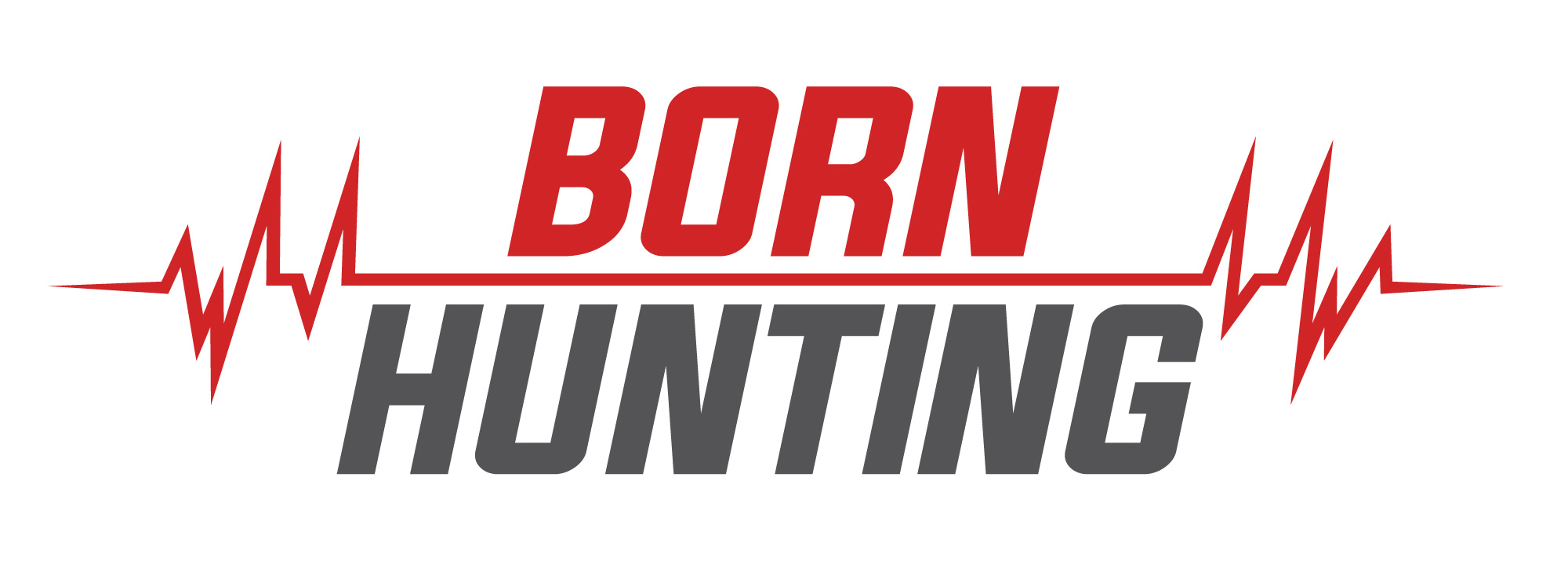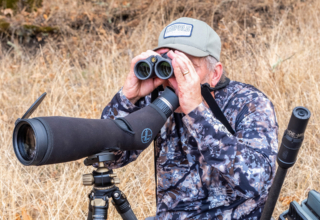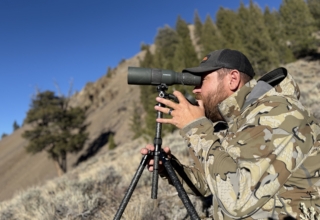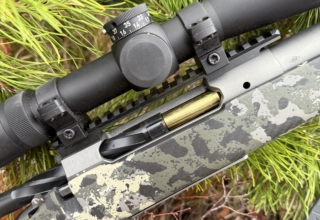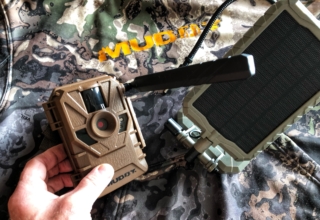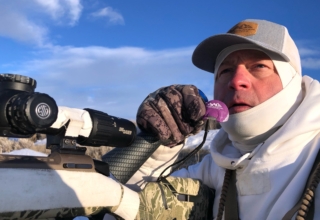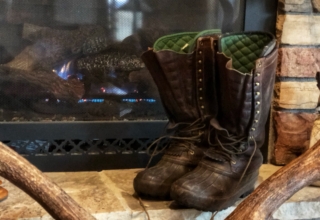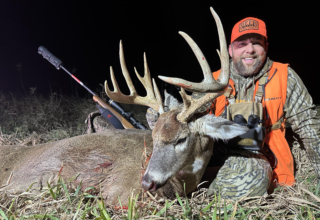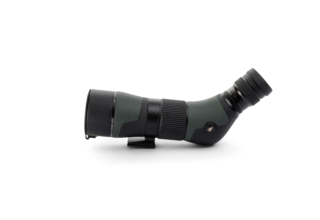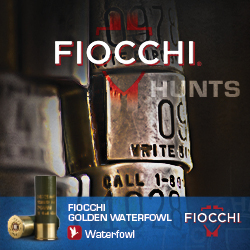Certified shed antler hunting nut, Mark Kayser, breaks down the gear you’ll need this spring/summer to find more bone.
by Mark Kayser
It’s started! The social media posts of shed antler nuts posting their first finds for spring 2025. Be reminded that spring does not kick off until March 20. No worries, even if you are like me and staring at feet of snow to negotiate to an early shed antler, organizing yourself and your gear makes sense to succeed when temperatures (and sometimes laws) finally allow an antler pursuit.
Depending on your degree of passion and time to roam the outback, you may not need all these gear ideas. Nevertheless, whether I dive into a backcountry canyon looking for dropped elk shed antlers or take off on a cross-country Midwestern whitetail shed antler quest, I have most of this gear packed for immediate deployment.
Clothing Layers
You’ll get arrested shed antler hunting naked, so put some clothes on and dress for success. Ditch the cotton and use layers of polyester-based clothing to perform at your best. Poly-based clothes wick away sweat or even environmental moisture and transport it to outside layers for help in drying. You can still pack along that puffy jacket, down—or manmade fiber-filled, but ditch the jeans and Iron Maiden t-shirt.
My latest hikes include testing the Muddy Outdoors TRX clothing system with base layers from jackets and everything in between to guarantee environmental protection. If rain shows on the forecast, pack appropriately, and remember that rain gear serves as survival gear to trap your body heat if you should become non-ambulatory. Layer away!
Backpack
My go-to backpack continues to be my ALPS Elite frame with the 3800 pack attached. It expands to hold antlers between the frame and pack, plus the pack offers the right amount of cubic inches for food, layers, water, first aid, and survival gear. My son prefers the Hill People Gear Qui-Ya backpack for his comfort and the three horizontal compression straps that pull in tight to hold shed antlers or an elk quarter tight. His field test has been ongoing for five years now with no complaints.
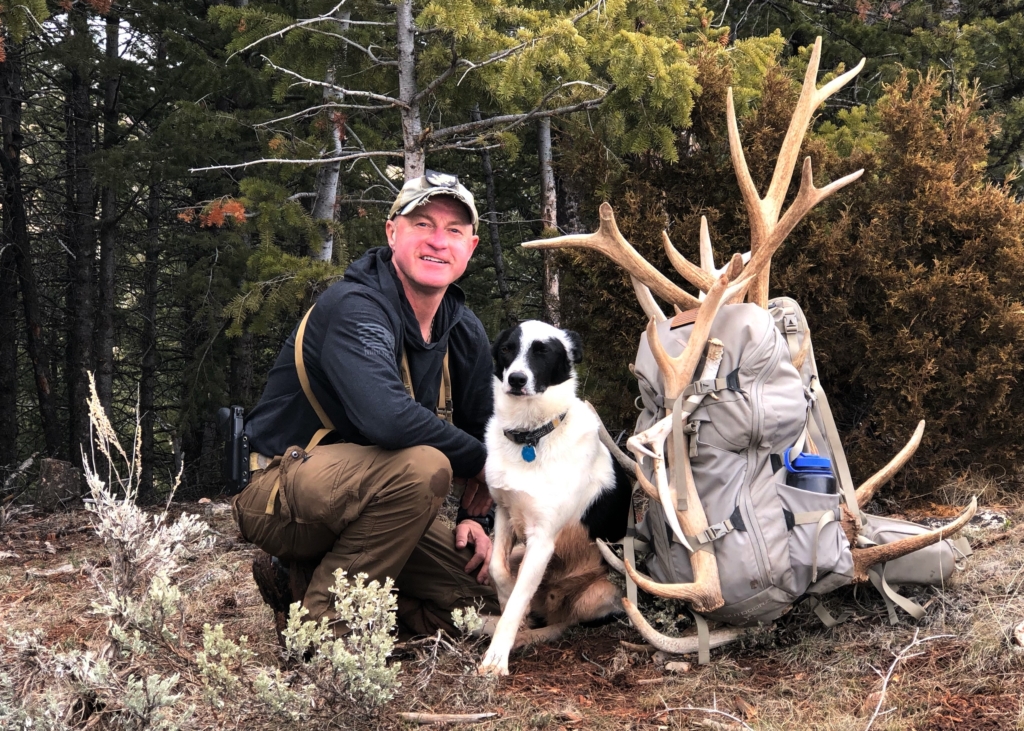
Both packs are internal frame designs constructed of heavy-duty, tear-resistant fabric and expandable for extreme loads. The ALPS Elite offers the option of swapping out packs while the Qui-Ya expands or contracts with its convincing compression system. With its 6,500 cubic-inch volume, it’s definitely a multi-day pack. Compare the ALPS Elite price at an MSRP of $449.99 and the Hill People Gear Qui-Ya at $393.
Optics
I will debate with you all day long (I was a winning debater in junior high and am currently at home) on the merits of a 10-power binocular. I will also debate with you on spending the extra money to purchase quality glass over a mid-range optic.
The Benefits Of 10 Power
Although some people argue an 8-power is better for wide-angle scanning, I go the 10-power route because it provides me with more magnification to not only field-judge big game at a distance but also quickly recognize a weathered stick from an antler tip. At long range, I rest my binoculars on my pack or steady up with my elbows on my knees, and it provides the benefit of a spotting scope set on low power.
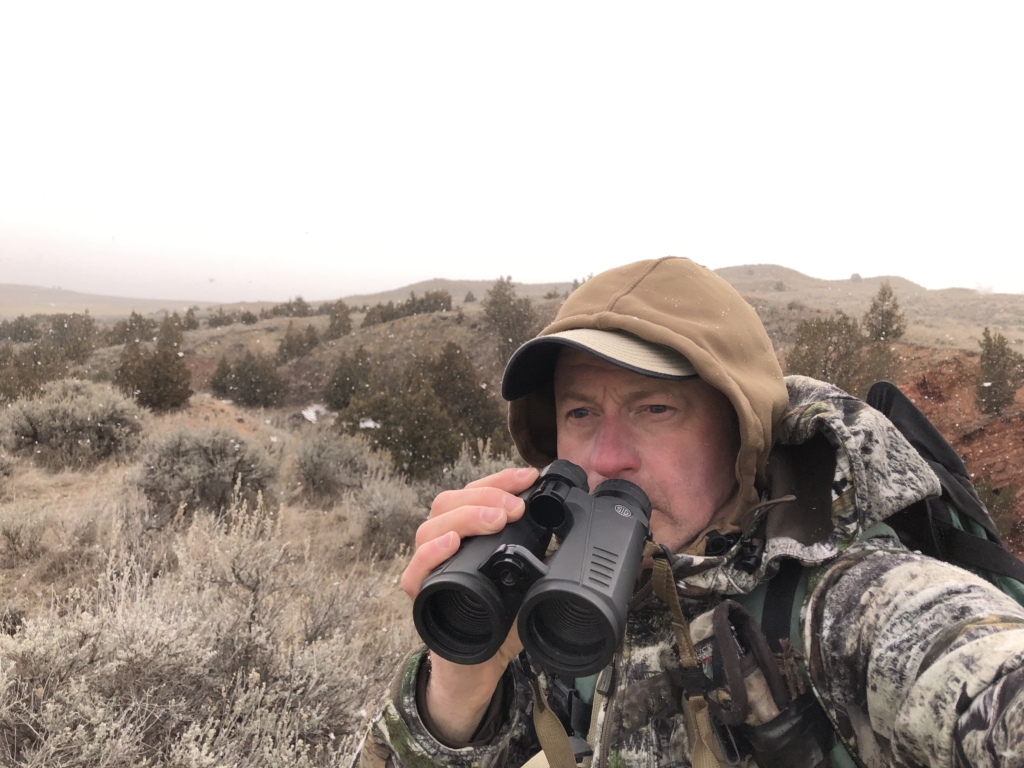
For shed antler hunting, I leave the rangefinding binoculars at home. Yes, if it is your only option, bring it along. You can always zap ranges to see how far it is across a soybean field to an antler shimmering in the sun. It is added weight and bulk I do not need in the spring.
My choice of late is the Sig Sauer Electro-Optics ZULU10 HDX binocular 10x42mm. It’s a wallet opener at $1,399.99, but the clarity will last forever. I’ve used mine to find hundreds of shed antlers in picked cornfields to sheer granite canyons.
Boots
I’m not a fan of the whitetail rubber boot craze. They make my feet sweat more than wearing pac boots on a beach in the Bahamas. Yuck! Nevertheless, I see the reason to don them occasionally while shed antler hunting. I’ve been testing the Muddy Outdoors DV8 non-insulated 17-inch neoprene rubber boots throughout the past hunting season. However, I do not wear them as high-mileage boots. They are for short jaunts to keep feet dry from slushy snow, mud, and shallow waterways. A firm footbed with spring and all-terrain traction is perfect for an hour or two marching through woodlots.
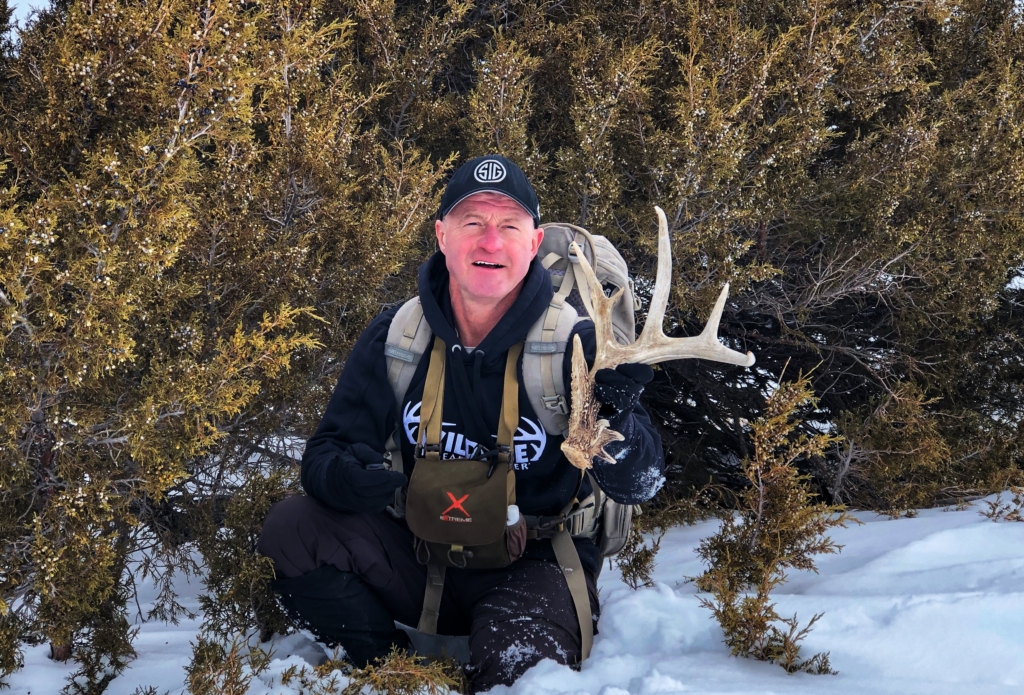
I wear the Kenetrek Mountain Extreme non-insulated version most of the spring. When snow is an issue, I slip on a pair of Outdoor Research gaiters to keep my hiking pants dry and add additional waterproofness to the footwear system. The K-Talon lug traction takes me where bighorn sheep live (where I find many elk sheds), and the waterproof Windtex membrane guarantees a dry foot at the end of the day. I bet my life on these boots in the mountains to get me in and out.
Trekking Poles
I am a hoarder, and one thing I hoard is bent trekking pols. I have them strapped to the front of ATVs as backups, hanging in my garage, and even staking down mesh wire panels to keep deer from rubbing the trees in my front yard. My son gave me a trekking pole a few Christmases ago as a gift. I was thrilled. The Black Diamond Explorer 2 Trekking Pole has been a Godsend. It does not collapse as far as many trekking poles, halving its size. Nevertheless, it is as rugged as a hickory baseball bat and does not bend, flex, and, best of all, break. It’s been in the nastiest of Wyoming’s backcountry, and still no bends.
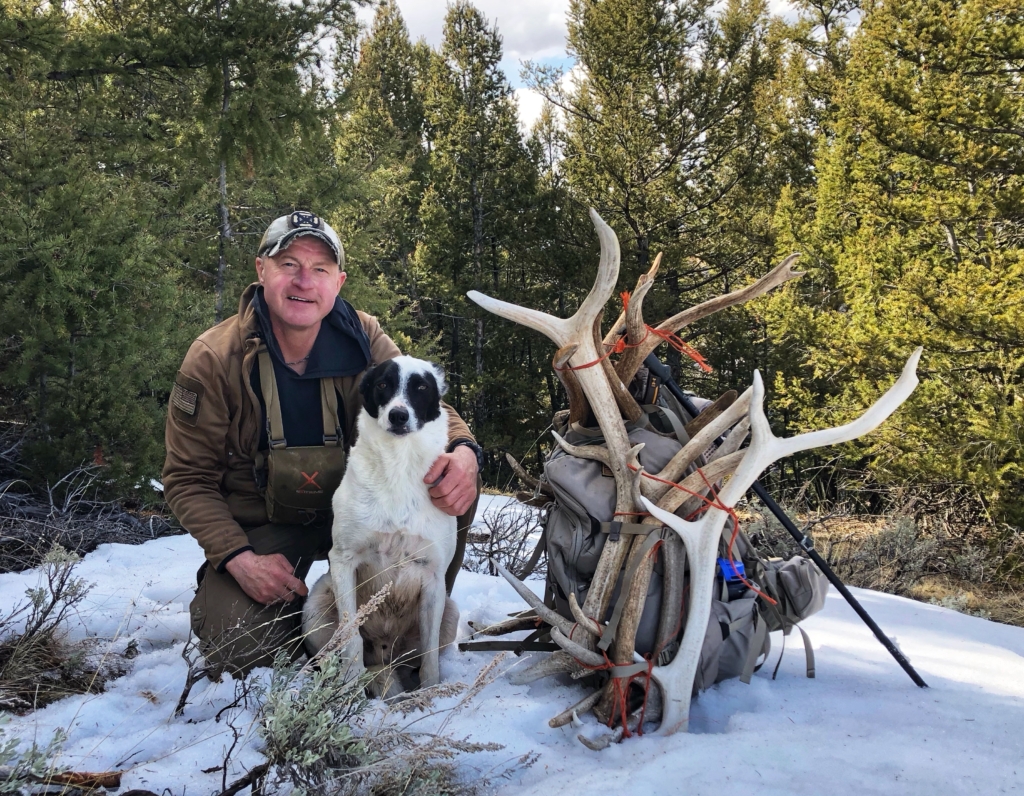
I only use one trekking pole to balance myself, and as I get older, I use it more and more, regardless of the terrain. It doubles as a brace to set my binoculars atop the glass with a steadier hold.
First Aid/Survival
You may not need survival gear while visiting Uncle Henry’s 200-acre farm in Indiana for a shed bonanza, but a hike into the backcountry deserves first aid and survival attention. I always carry the basics for first aid in a homemade kit. Stock it with various bandage sizes, liquid bandages, gauze, butterfly closures, medical tape, and a packet of QuikClot hemostatic devices.
Pain reliever, antiseptic wipes, and antibiotic ointment should also be included. You may want to consider a tourniquet (I always carry one) to slow blood loss from a major laceration. Add a small first aid manual for refresher information during the panic of an injury. Adventure Medical Kits can set you up with any size of kit you need.
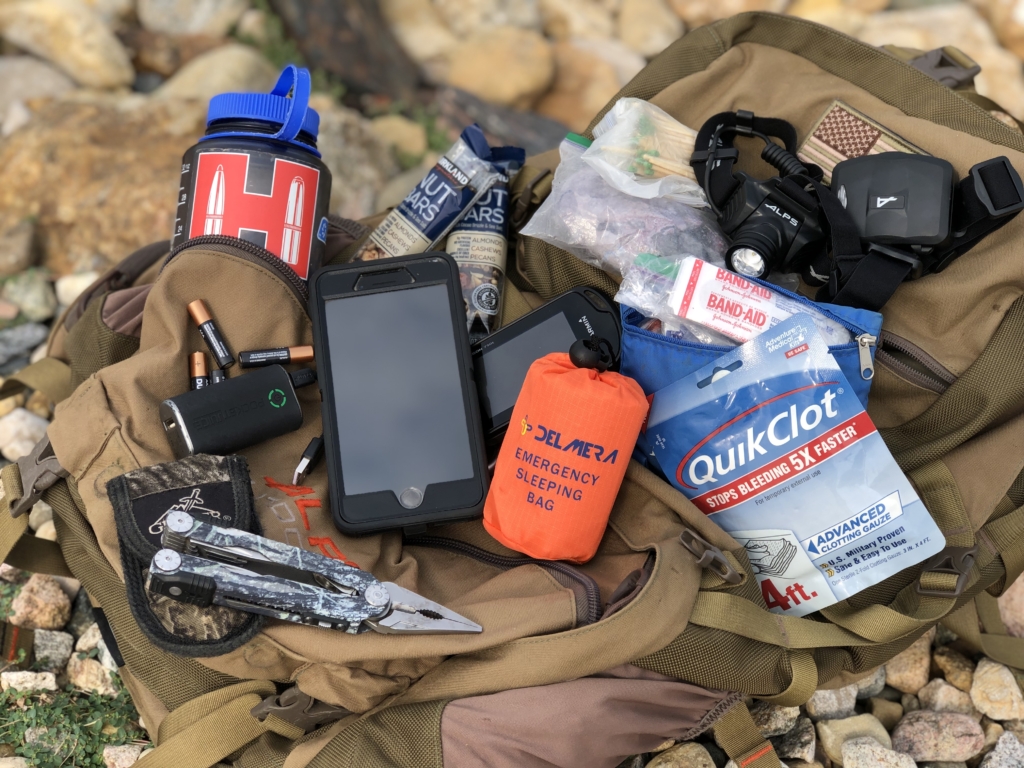
For survival, I carry two or three fire-starting options: tinder, an emergency sleeping bag (4.6 ounces), a water purification kit, a flashlight, and an extra energy bar or three.
I also always carry spare power for my smartphone to E.T. call home when trouble arises. These items should carry me through until someone comes to the rescue.
Hunting App
In the pre-hunting app days, I marked shed antler finds and grid lines with whatever I could find lying on the ground. Empty pop or booze bottles, animal skulls, and even old tires against a tree trunk gave me visual clues.
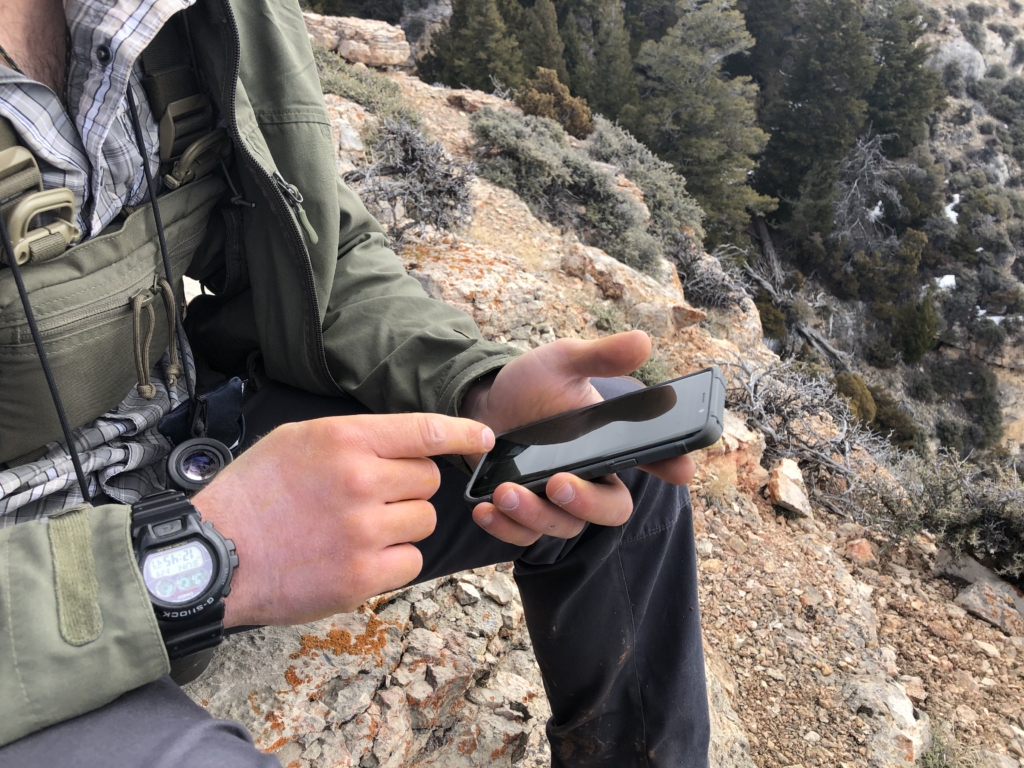
Today, I mark everything on my HuntStand hunting app. In addition to a detailed 10-day weather forecast, I can mark shed antler finds to return later to find the match if unsuccessful during the first try. It also helps me escape when narrow cliffs or deep canyons become problematic.
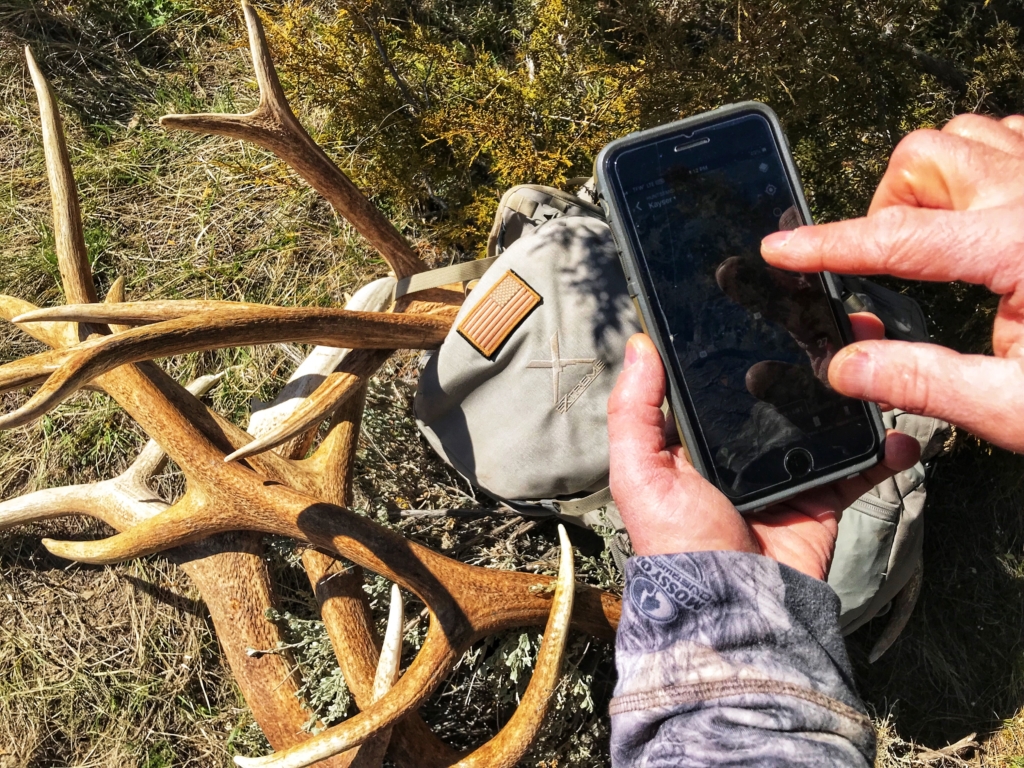
Firearm
Finally, consider carrying a firearm. Depending on whether I’m in grizzly country or just cougar country (not the Walmart cougars, either), I swap sidearms. For the big stuff, I carry a .40 S&W Glock model 22, and for most hikes, I stow my Smith & Wesson M&P 9 Shield, 9mm, in my binocular pack.
The binocular pack is the Hill People Gear Bino Pouch with the add-on Recon Kit Bag for concealed carry convenience. With a quick zipper zip, you have access to your sidearm immediately.
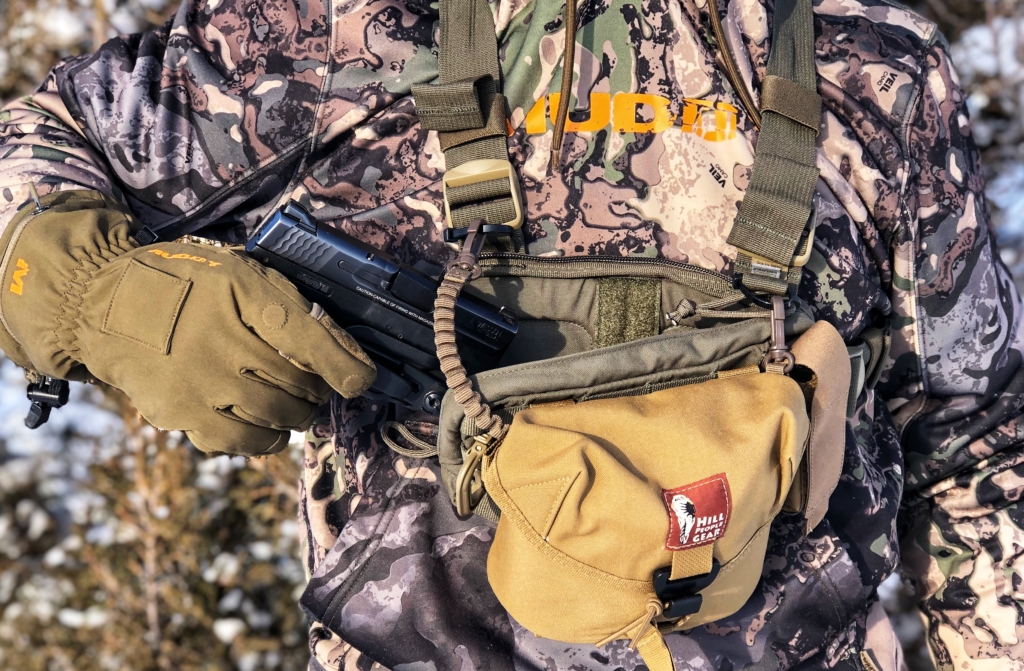
Most days, this gear goes with me whether I’m looking for deer or elk sheds. Do I need all of it every day? No, but when I do, any situation becomes much easier to handle in a sometimes-unforgiving environment.
